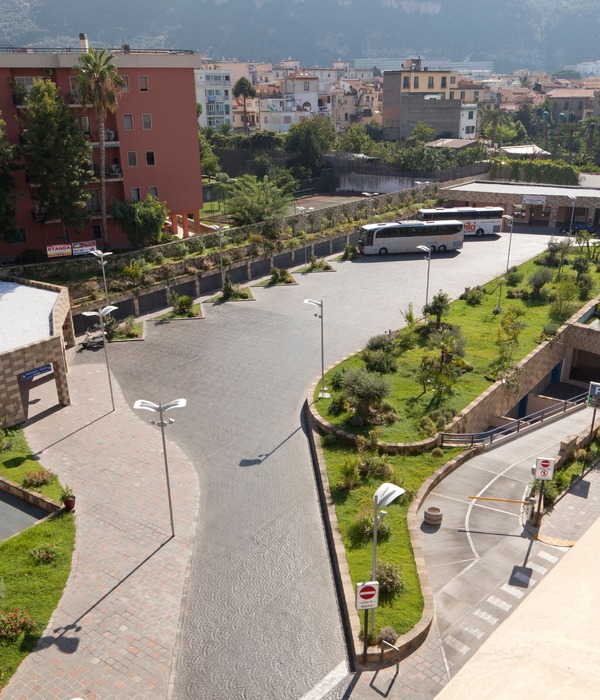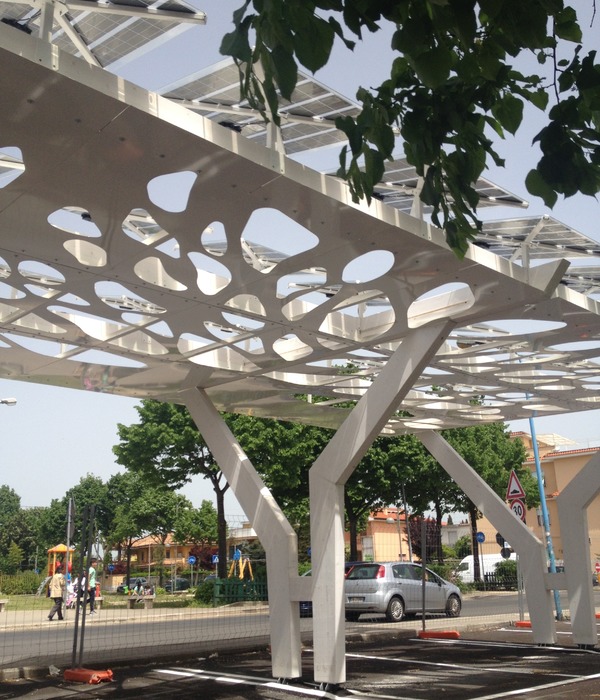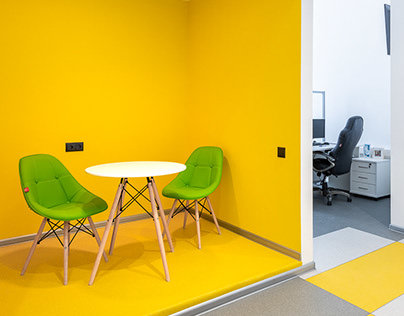Maritime火车站曾是欧洲最大的货运火车站,位于布鲁塞尔Tour & Taxis工业区中。建筑师将这里改造成为了一座室内城市,包含办公购物等不同功能,并且提供了大量的公共空间供人们休闲使用。新的Maritime火车站是一片位于钢铁屋顶之下的城区,是一座永远不会下雨的城市。
Gare Maritime, once Europe’s largest railway station for goods on the Tour & Taxis site in Brussels, has been transformed into a covered city with a mixed program of working and shopping and plenty of public space to relax. Under impressive steel roofs Neutelings Riedijk Architects designed the new Gare Maritime as a city district; ‘a city where it never rains’.
▼项目概览,overall view of the project ©Neutelings Riedijk Architects, photographer: Filip Dujardin
老火车站建造于20世纪,由三个大厅和四个小厅组成。在原有边廊的屋顶下,建筑师增加了12栋新建筑,以容纳新的功能。这些建筑之间形成了街道、花园和广场,其结构与周边现存的城市肌理自然统一,仿佛一座真正的城市。
The old station from the beginning of the 20th century consists of three larger and four smaller halls. Under the existing roofs of the side aisles, twelve new pavilions have been added to accommodate the new program. They create a new structure of boulevards and street, gardens and squares, that follows the existing urban context and the building structure in a natural way, like a true city.
▼保留屋顶下宽敞的步行道,spacious walking street under the existing roof ©Neutelings Riedijk Architects, photographer: Filip Dujardin
▼如城市一般的空间,space like a city ©Neutelings Riedijk Architects, photographer: Sarah Blee
建筑的中心区域向公众开放。这里环境宜人,随着季节的变化而变化。建筑师从Ramblas大道汲取灵感,在活动空间两侧各设置了一条林荫步道。步道宽16米,种有一百棵大树,并且为内花园提供了足够的空间。项目中总共有10个花园,分为4个主题,分别是林地花园,鲜花花园,青草花园和芳香花园。布鲁塞尔视觉艺术家Henri Jacobs则为广场设计了8种马赛克。
The central space in the heart of the building has been kept open for public events. It has a pleasant climate which follows the changing of the seasons. Inspired by the ‘Ramblas’, on both sides of the event space a green walking boulevard is created. The 16 meters wide pedestrian routes give enough room for spacious inner gardens, with a hundred large trees. Gare Maritime counts a total of ten gardens based on four themes: the woodland garden, the flower garden, the grass garden and the fragrance garden. For the squares, Brussels visual artist Henri Jacobs designed eight mosaics.
▼步行道中的花园,gardens on the walking street ©Neutelings Riedijk Architects, photographer: Filip Dujardin
▼可供公众活动使用的公共空间,space for public events ©Neutelings Riedijk Architects, photographer: Filip Dujardin
新的建筑由胶合木建造,极大减少了水泥的使用。对木材的选择同样促进了施工的进程。由于采用预制和干式建造技术,项目的施工时间显著缩短。
The new pavilions have been constructed in Cross Laminated Timber (CLT), with an enormous reduction in the amount of cement as a result. The choice for wood also had a favorable effect on the construction process: thanks to prefabrication and the dry constructing method, the construction time was considerably shorter.
▼店面,采用胶合木建造,store front constructed in CLT ©Neutelings Riedijk Architects, photographer: Sarah Blee
▼宽阔的室内空间,spacious interior space ©Neutelings Riedijk Architects, photographer: Filip Dujardin
▼胶合木为空间的主要材料,space mainly constructed in CLT ©Neutelings Riedijk Architects, photographer: Filip Dujardin
▼木制楼梯间,wooden staircase ©Neutelings Riedijk Architects, photographer: Filip Dujardin
新的Maritime火车站不使用化石能源,所有能源自给。Picard街道上的玻璃立面中加入了太阳能单元;屋顶上安装了17000平米的太阳能板。项目中还使用了其他不同程度的长期可持续技术,如地热能源,雨水回收再利用等。该项目为Tour &Taxis工业区乃至整个布鲁塞尔运河区的可持续发展做出了重要贡献。
Gare Maritime is entirely energy neutral and fossil free. The glass facades on Picardstreet are provided with solar cells. On the roofs a total area of 17,000 m2 of solar panels has been installed. At all levels far-reaching sustainability measures have been implemented, such as use of geothermal energy and reuse of rainwater. Gare Maritime is an important contribution to the sustainable development of the Tour & Taxis site and the Kanaalzone in Brussels.
▼可持续策略分析图,sustainable strategy analysis ©Neutelings Riedijk Architects
▼设有太阳能单元的玻璃立面,glass facade with solar cells ©Neutelings Riedijk Architects, photographer: Filip Dujardin
项目业主为Extensa,与Bureau Bouwtechniek,Ney & partners,Boydens engineering和OMGEVING合作完成。在一期工程中,Jan de Moffarts建筑事务所与Bureau Bouwtechniek,Ney & Partners以及Boydens一起,仔细保护并修复了场地上原有的历史建筑物。
This project was commissioned by Extensa and realized in cooperation with Bureau Bouwtechniek, Ney & partners, Boydens engineering and OMGEVING. In the first phase, the existing historic building was carefully restored by Jan de Moffarts Architects, Bureau Bouwtechniek, Ney & Partners and Boydens.
▼项目沿街外观,保留历史建筑,street view of the project with historic building restored ©Neutelings Riedijk Architects, photographer: Tim Fisher
▼分解轴测图,exploded axonometric ©Neutelings Riedijk Architects
▼总平面图,site plan ©Neutelings Riedijk Architects
▼平面图,plan ©Neutelings Riedijk Architects
▼局部平面图,partial plan
▼立面图,elevation ©Neutelings Riedijk Architects
▼剖面图,section ©Neutelings Riedijk Architects
▼剖面细部,detailed section ©Neutelings Riedijk Architects
▼节点细部,details ©Neutelings Riedijk Architects
{{item.text_origin}}












